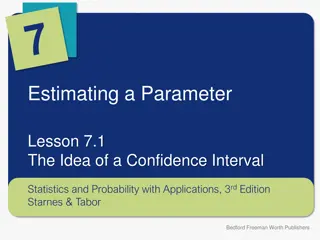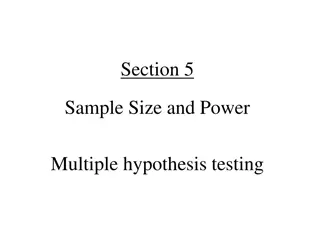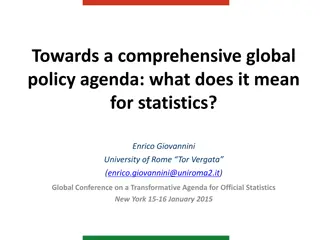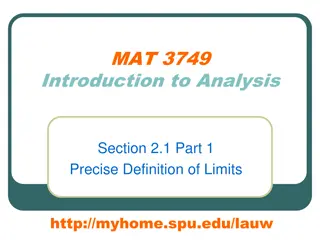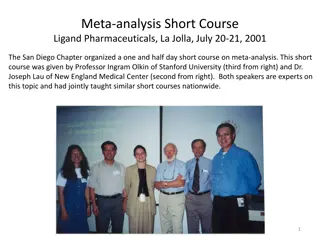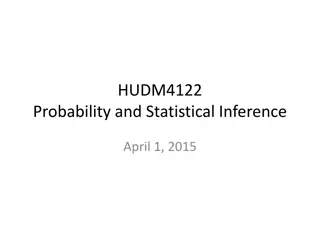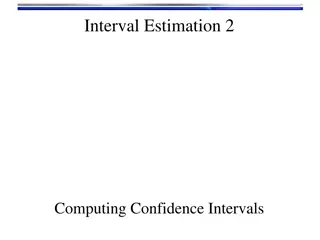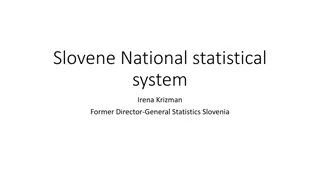Understanding Confidence Limits in Statistical Analysis
Confidence limits are a crucial concept in statistical analysis, representing the upper and lower boundaries of confidence intervals. They provide a range of values around a sample statistic within which the true parameter is expected to lie with a certain probability. By calculating these limits, researchers can make informed inferences about populations based on sample data. A 95% confidence level is commonly used, reflecting the likelihood that the true population parameter falls between the specified limits. This article delves into the significance and application of confidence limits in various statistical contexts.
Uploaded on Oct 11, 2024 | 0 Views
Download Presentation

Please find below an Image/Link to download the presentation.
The content on the website is provided AS IS for your information and personal use only. It may not be sold, licensed, or shared on other websites without obtaining consent from the author. Download presentation by click this link. If you encounter any issues during the download, it is possible that the publisher has removed the file from their server.
E N D
Presentation Transcript
CONFIDENCE LIMITS Confidence limits are a pair of numbers used to describe an estimate or other characteristic of a population. They are the upper and lower boundaries of confidence intervals. Anywhere you calculate a confidence interval (e.g., effect sizes, non-centrality parameters, risk ratios), you will have associated confidence limits. It represents limits between which you expect to find a particular measurement or statistic.
More precisely, a confidence limit is a range of values, calculated around a sample statistic, that contains the true parameter with given probability for repeated sampling. A 5% alpha level is commonly used, which is associated with a 95% confidence level. If you were to repeat your experiment over and over again, 95% of the time the true population parameter would lie between the specified lower limit and upper limit. For example, if your confidence interval for a mean ( ) is 5 < < 6, your confidence limits are 5 and 6. If you were to repeat this experiment, 95% of the time you would expect to find the true population parameter within these limits. There is a 5% chance that the results would not contain the true value.


